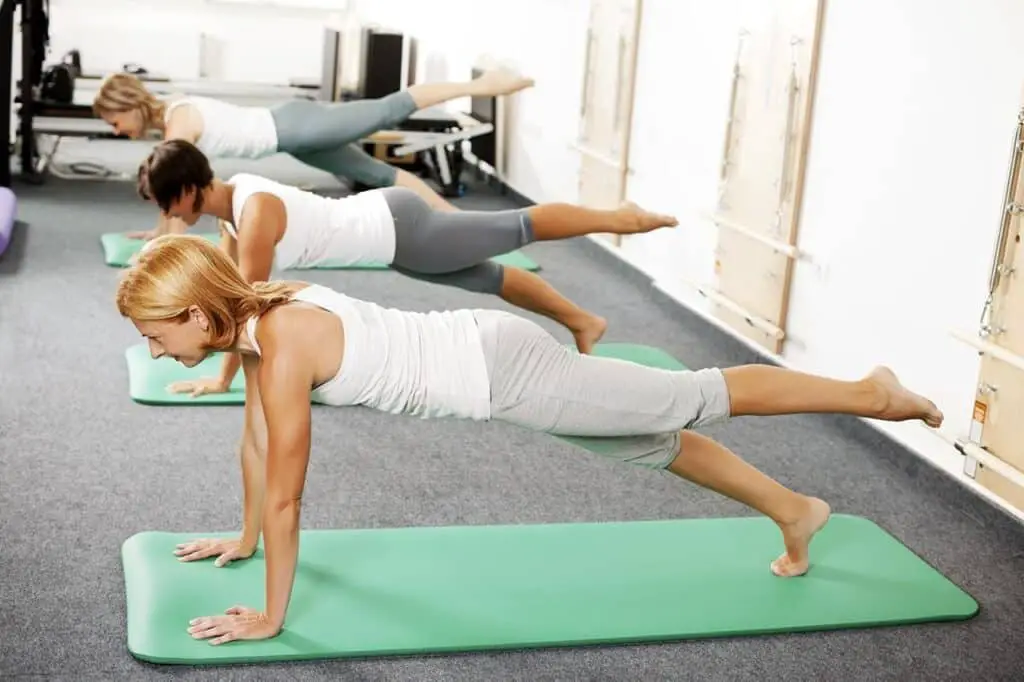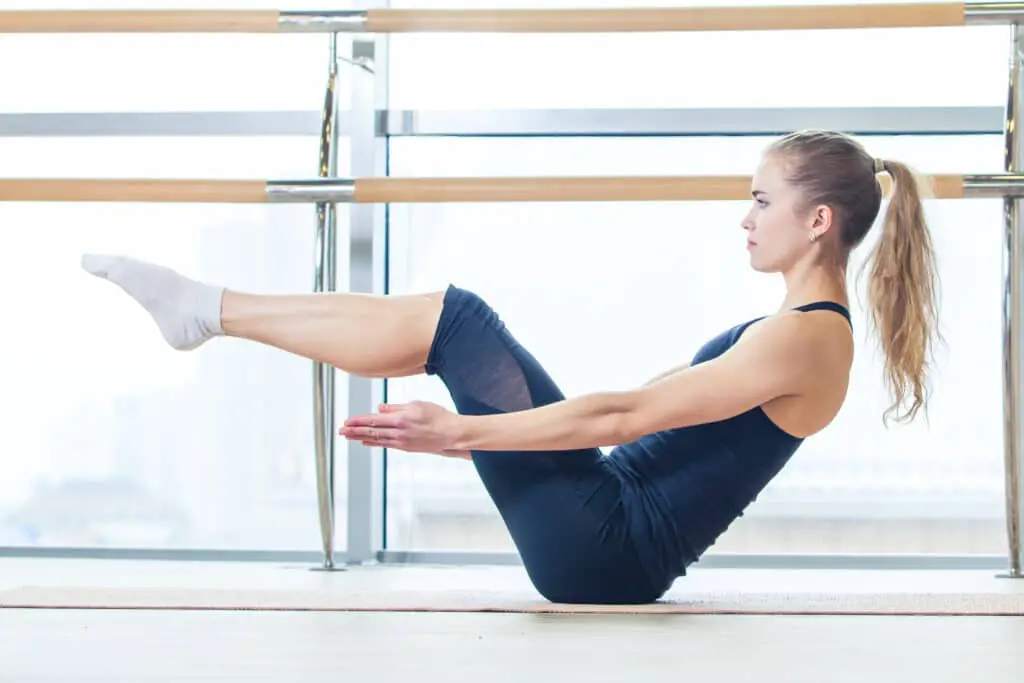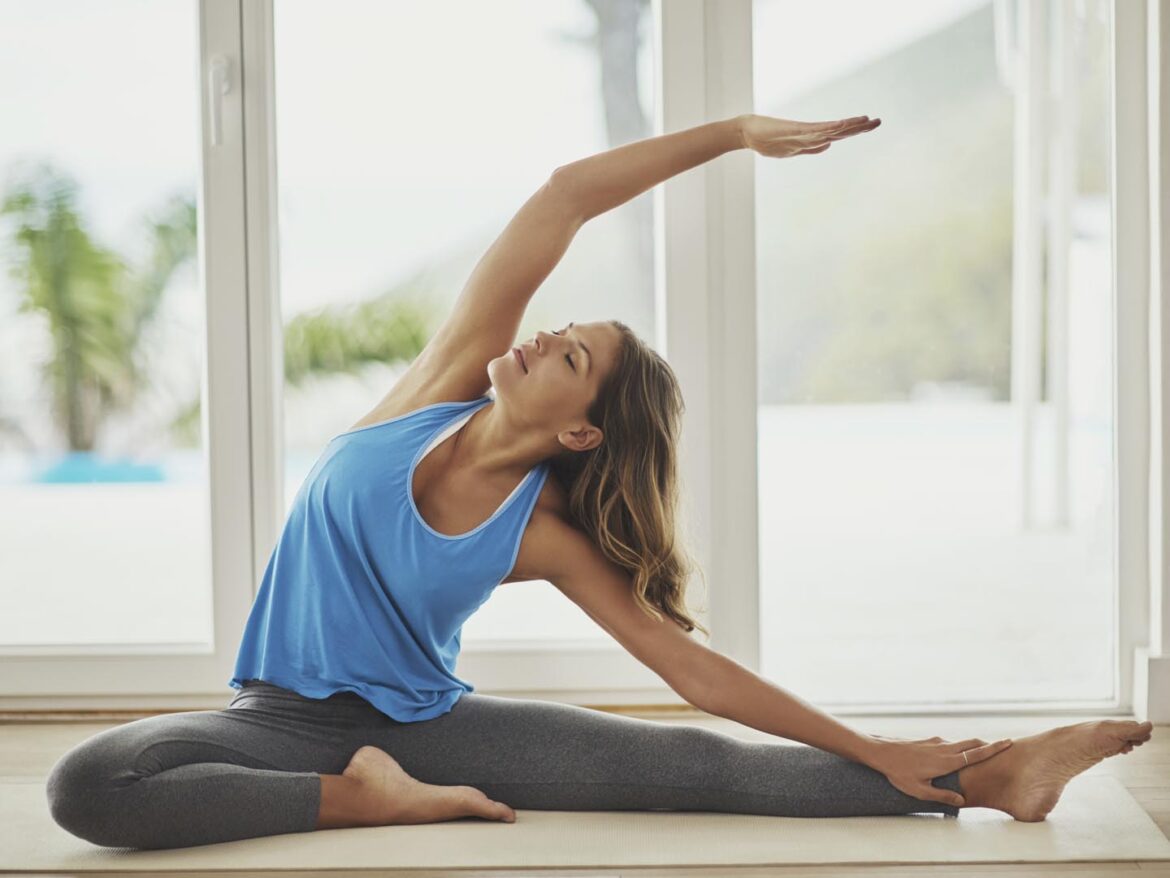Introduction
How Long Does It Take To See Results With Pilates: Embarking on a fitness journey often comes with a sense of anticipation and eagerness to witness the transformative effects of your efforts. When it comes to Pilates, a popular low-impact exercise method that focuses on improving core strength, flexibility, and overall body awareness, the timeline for seeing visible results can vary from person to person. Patience and consistency are key, but understanding the factors that influence the rate at which you’ll notice changes in your body can help set realistic expectations. In this exploration, we will delve into the question, “How long does it take to see results with Pilates?” by considering various factors that play a role in your progress, as well as the potential benefits that await those who commit to this mind-body exercise regimen.
Your fitness level and prior experience with exercise can significantly impact how quickly you notice results. Individuals who are already relatively fit may experience changes more rapidly, while beginners might take a bit longer to adapt to the exercises and see improvements. Consistency is crucial in any fitness routine, including Pilates. Committing to regular sessions, whether it’s once a week or multiple times a week, can expedite your progress. Aim for a routine that you can sustain over the long term.
The intensity and duration of your Pilates sessions also matter. Longer and more challenging workouts are likely to yield quicker results compared to shorter, less intense ones. As you progress, you can gradually increase the intensity of your exercises. What you eat plays a significant role in shaping your body. Combining Pilates with a balanced and healthy diet can enhance your results. Proper nutrition fuels your body, aids in muscle recovery, and supports overall well-being.

How many times a week should I do Pilates to see results?
3-4 classes per week is ideal for someone who wants the strength benefits of Pilates as it will provide your body with enough stimulus for the muscles to get stronger, leading to improvements in posture and fewer general aches and pains.
Your Fitness Goals
The number of times you should do Pilates each week largely depends on your fitness goals. If your goal is to maintain general fitness, flexibility, and improve posture, participating in Pilates classes or workouts 2-3 times a week may be sufficient. However, if you’re looking to see significant changes in your body composition, such as increased muscle tone or weight loss, you may need to commit to more frequent sessions.
Your Current Fitness Level
Your current fitness level is another important factor to consider when determining your Pilates frequency. Beginners may benefit from starting with 2-3 sessions per week to build a solid foundation and gradually increase the frequency as they become more experienced. Those who are already physically active or have a strong fitness background might be able to handle more frequent Pilates workouts.
Pilates Intensity
The intensity of your Pilates workouts also plays a role in how often you should do them. Pilates can vary from gentle, low-impact exercises to more intense, high-intensity interval training (HIIT) Pilates sessions. If you’re engaging in high-intensity Pilates, it’s essential to allow your body adequate time for recovery. In such cases, 2-3 sessions per week with rest days in between may be more suitable.
Listen to Your Body
One of the key principles of Pilates is body awareness. Pay attention to how your body responds to your workouts. If you’re experiencing excessive muscle soreness, fatigue, or discomfort, it may be a sign that you need more time to recover between sessions. Overtraining can lead to injuries and hinder your progress, so always listen to your body’s signals.
How many times a month should I do Pilates to see results?
When creating your ideal Pilates workout schedule, devise one that works with your lifestyle and helps you meet your specific fitness goals. While three or four workouts per week may be ideal, two or even once-weekly sessions can still offer health benefits.
Your Fitness Goals
Your specific fitness goals are a significant factor in determining your Pilates frequency. If you’re looking to maintain general fitness, improve flexibility, and enhance posture, practicing Pilates once or twice a week may be sufficient. However, if you have more ambitious goals, such as building muscle tone, losing weight, or achieving advanced flexibility, you may need to commit to more frequent sessions.
Your Current Fitness Level
Your current fitness level is an essential consideration when deciding how often to do Pilates. If you’re new to Pilates or have a limited fitness background, starting with one or two sessions a week can be a reasonable approach. This allows your body to adapt gradually and minimize the risk of overtraining. On the other hand, if you’re already in good shape, you may be able to handle more frequent Pilates workouts.
The Type of Pilates
Pilates can be practiced in various forms, ranging from gentle mat exercises to more intense reformer-based sessions or Pilates classes that incorporate cardio and strength training elements. The type of Pilates you choose will impact your ideal frequency. High-intensity Pilates workouts may require more time for recovery between sessions, whereas gentler forms may be practiced more frequently.
Your Body’s Response
Listening to your body is crucial when determining the frequency of your Pilates practice. If you find yourself feeling overly fatigued, experiencing muscle soreness, or facing discomfort, it may be a sign that you need more recovery time between sessions. Overtraining can lead to injuries and hinder progress, so it’s essential to strike the right balance between exercise and recovery.
Can Pilates change your body shape?
Pilates can change your shape through toning and its emphasis on alignment and improving posture. It’s known for working from the inside out and can give you the appearance of being taller and slimmer. While you can work up a sweat from Pilates, on its own it isn’t the most effective way to lose weight.
Building Lean Muscle Mass
Pilates exercises target various muscle groups, promoting muscle endurance, strength, and tone. While Pilates generally does not aim to build bulk or significant muscle mass like weightlifting or bodybuilding, it does contribute to building lean muscle. As you consistently engage in Pilates and challenge your muscles through resistance and bodyweight exercises, you may notice improved muscle definition and a more toned appearance.
Improving Posture and Alignment
One of the significant benefits of Pilates is its focus on alignment and posture. Regular practice can correct postural imbalances, enhance spinal alignment, and strengthen the muscles supporting the spine. Improved posture not only makes you look taller and more confident but can also create the illusion of a different body shape.
Enhancing Flexibility and Lengthening Muscles
Pilates incorporates a range of stretching and lengthening exercises that target muscles and joints, enhancing flexibility and range of motion. These exercises can elongate muscles, providing a more streamlined appearance. The increased flexibility allows for a greater range of motion during workouts and everyday activities, contributing to improved overall body function.
Does Pilates tone your body quickly?
Pilates is an effective low-impact workout. It can be beneficial for toning up muscles, toning the core, and improving posture. It may also help with recovery from back pain and other injuries by strengthening the affected area. If you’re looking to lose weight, you can incorporate Pilates into your wellness plan.
Foundations of Pilates
Pilates is a low-impact exercise method that emphasizes controlled, precise movements. It works by targeting specific muscle groups, particularly the core muscles, without the high-intensity impact seen in other forms of exercise. While Pilates is excellent for building lean muscle and toning the body, it may not produce rapid results akin to high-intensity workouts.
Realistic Expectations
While Pilates can be highly effective for toning the body, it’s important to have realistic expectations. Rapid and dramatic changes in body tone typically require a combination of factors, including diet, strength training, cardiovascular exercise, and genetics.
Pilates is more about creating long-lasting, sustainable changes in your body. It promotes lean muscle development, which can result in a sculpted, toned appearance over time. You may begin to notice improved muscle tone, better posture, and increased flexibility within a few weeks of consistent practice. However, significant body transformation may take several months or longer.
Why am I not seeing results from Pilates?
One of the main reasons you may not be feeling or seeing the results of your Pilates workouts is your consistency, or lack thereof. While you may be getting some benefits from yo-yoing from 5 classes one week, to a two week break, you’ll find far greater results from building a solid foundation from the get go.
Inconsistency
Consistency is key in any fitness program, including Pilates. If you’re not seeing results, it may be because you’re not practicing Pilates regularly enough. To experience the benefits, aim for consistent, weekly sessions. Skipping workouts or practicing sporadically can slow down your progress.
Solution: Create a realistic and sustainable Pilates routine that you can stick to. Set a schedule that works for you and prioritize your Pilates practice.
Improper Technique
Pilates is all about precise, controlled movements that target specific muscle groups. If you’re not performing exercises with proper form and technique, you may not be effectively engaging the intended muscles.
Solution: Consider working with a certified Pilates instructor who can provide guidance, corrections, and personalized feedback on your technique. Proper instruction can make a significant difference in your results.
Insufficient Intensity
The intensity of your Pilates workouts plays a role in the results you achieve. If your sessions lack intensity or variety, you may not be challenging your muscles enough to see noticeable changes.
Solution: Explore different types of Pilates classes or workouts that incorporate resistance, advanced exercises, and variations to increase the intensity of your practice. Consult with an instructor to help you progress to more challenging routines.
Does Pilates make your waist smaller?
Combined with lifestyle modification, Pilates can give better results in trimming your waistline as it improves your postural alignment while strengthening and defining your external obliques. The benefit of exercising for smaller waistline is to achieve and maintain an hourglass figure.
Core Strengthening
Pilates places a significant emphasis on core strength, targeting muscles such as the rectus abdominis (front of the abdomen), obliques (side of the waist), and transverse abdominis (deep core). As you engage in regular Pilates practice, these core muscles become stronger and more toned, helping to cinch in your waistline.
Improved Posture
A slouched or rounded posture can make your waist appear wider than it actually is. Pilates promotes proper alignment and posture by strengthening the muscles that support your spine. As your posture improves, your waistline may naturally appear smaller, giving you a taller and more slender appearance.
Enhanced Flexibility
Pilates incorporates stretching exercises that promote flexibility, particularly in the spine and waist area. Improved flexibility can create a more graceful, elongated waistline, contributing to a smaller and shapelier appearance.
Mindful Eating Habits
While Pilates can have a positive impact on your waistline, it’s essential to complement your workouts with a balanced diet. Pilates may increase your awareness of your body and its needs, which can lead to healthier eating habits. A mindful approach to nutrition can help you manage your waist size more effectively.
What kind of body will Pilates give you?
Health benefits of Pilates
improved flexibility. increased muscle strength and tone, particularly of your abdominal muscles, lower back, hips and buttocks (the ‘core muscles’ of your body) balanced muscular strength on both sides of your body. enhanced muscular control of your back and limbs.
Toned and Lean Muscles
Pilates is known for creating long, lean muscles rather than bulky ones. The exercises in Pilates often focus on controlled movements and emphasize muscle lengthening and strengthening, resulting in a toned and sculpted appearance. You’ll notice improved muscle definition, especially in your core, legs, arms, and back.
Improved Core Strength
One of the primary outcomes of Pilates is enhanced core strength. The exercises in Pilates target the deep core muscles, including the abdominals, obliques, and lower back muscles. A stronger core not only helps in achieving a flatter stomach and a more defined waist but also improves posture and supports the spine.
Enhanced Flexibility
Pilates incorporates a wide range of stretching exercises that enhance flexibility and joint mobility. Regular Pilates practice can significantly increase your range of motion and flexibility, allowing for more fluid movements and a greater ability to engage in various physical activities.
Is Pilates alone enough exercise?
Is Pilates Enough of a Workout? Pilates is enough of a workout for one session; however, it’s important to vary your workouts based on your goals throughout your fitness journey. This means performing different styles of workouts that compliment your fitness goals.
Core Strength and Muscle Toning
Pilates is renowned for its ability to strengthen the core muscles, including the abdominals, obliques, and lower back. Regular Pilates practice can lead to improved muscle tone, better posture, and a more sculpted physique. If your primary fitness goal is to enhance core strength and tone your muscles, Pilates can be a significant component of your exercise routine.
Flexibility and Range of Motion
Pilates incorporates stretching and lengthening exercises that promote flexibility and joint mobility. These exercises can increase your range of motion and help prevent injuries. If flexibility is your primary focus, Pilates can be an effective standalone exercise for achieving and maintaining flexibility.
Posture and Body Awareness
Pilates places a strong emphasis on proper alignment and body awareness. It can help correct postural imbalances, reduce the risk of developing musculoskeletal issues, and promote better overall posture. If improving your posture and body awareness is a priority, Pilates can be a valuable standalone practice.

Conclusion
The question of how long it takes to see results with Pilates is as diverse as the individuals who embark on this fitness journey. The timeline for noticing changes in your body can vary significantly based on various factors, including your fitness level, consistency, goals, and individual attributes. While some may experience visible improvements in a matter of weeks, others may need several months of dedicated practice to witness significant physical transformations.
It’s important to approach Pilates with patience and a focus on overall well-being. Beyond just physical changes, Pilates offers a myriad of benefits, including enhanced core strength, flexibility, balance, and improved mental clarity. These non-physical advantages often become apparent earlier in one’s journey and can serve as motivating milestones along the way.
Ultimately, the true power of Pilates lies in its holistic approach to fitness, nurturing the mind-body connection and promoting a healthier, more balanced lifestyle. As you progress on your Pilates journey, remember that the path to transformation is as important as the destination, and the rewards of this practice extend far beyond the mirror’s reflection. Embrace the process, stay consistent, and savor the journey toward a stronger, more flexible, and healthier you.

